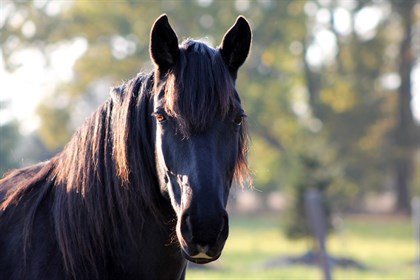
This article has appeared previously with Equestrian Life. To see what's in the current issue, please click here

Could you prove that your horse actually belongs to you?
By Equestrian Life
It sounds like a simple question, but if your horse went missing - and was subsequently found - could you prove that he actually belongs to you?
While most of us are aware of horse theft being a common issue in countries such as the UK, the truth is horses are reported stolen or missing each week in Australia. Some head out on an adventure of their own, others get loose during natural disasters such as bushfires, while occasionally horses are stolen.
If you found your missing horse at the local pound or suddenly saw your stolen horse advertised for sale, could you prove he was yours?
There are a number of ways to prove your horse is in fact your horse…
1. Formal horse identification (e.g. registration, branding and microchipping)
Formal I.D. is the most straightforward way to prove ownership.
Breed or association registration (e.g. EA rego) is a good way to prove ownership and it also means the information is stored elsewhere - which is very handy if you ever lose your own copies of the papers.
Even without society or association membership, you can still have your horse branded or microchipped. Doing this means that your horse will have a traceable identity - one that can be traced back to you.
Microchipping needs to be carried out by a qualified person, so ask your vet for information if it’s something you are considering.
2. DNA records
DNA is rarely used outside of horse breed societies, but it is a very handy way to prove that a horse is who you say he is - particularly if you are needing to prove that one bay horse is yours, while another virtually identical bay horse is not!
There are two commercial labs in Australia, and your vet should be able to help with finding a lab to record your horse’s DNA sample. If going through the entire DNA recording process seems a little extreme, you can always keep some of your horse’s hair in a zip lock bag with other records - as this could be used for a DNA test should the need ever arise down the track.
3. Horse I.D. photos
It’s always a good idea to have I.D. photos handy - take good clear photos of your horse from either side, as well as the front and back.
4. Horse I.D. chart
A horse I.D. chart is always a good idea - at the very least, it’s something you can hand out to rangers etc. should your horse go missing. The Australian Horse Industry Council has a handy chart that can be used for this purpose.
Keep your records together
Once you have all your identification and proof of ownership documents, keep them all together in a safe place - this includes microchip certificates, registration papers, contract of sales, DNA papers, photos, hair samples, and I.D. charts. It’s also a good idea to store documents online via cloud storage - so important information isn’t lost in the case of fire etc.
So what do you do if your horse goes missing?
Notify your local council ranger, the police and also the local saleyards - it’s also a good idea to provide these parties with copies of your horse’s I.D. chart.
It’s a good idea to create missing horse flyers with clear photos of your horse and identifying details and then put them up around your local area. These days, it’s also useful to create an online version of the flyer and share it with relevant groups across social media platforms such as Facebook.
Information sourced from The Australian Horse Industry Council.
READ THE LATEST NEWS ARTICLES HERE
https://www.equestrianlife.com.au/articles/If-your-horse-went-missing-could-you-prove-he-was-yours
